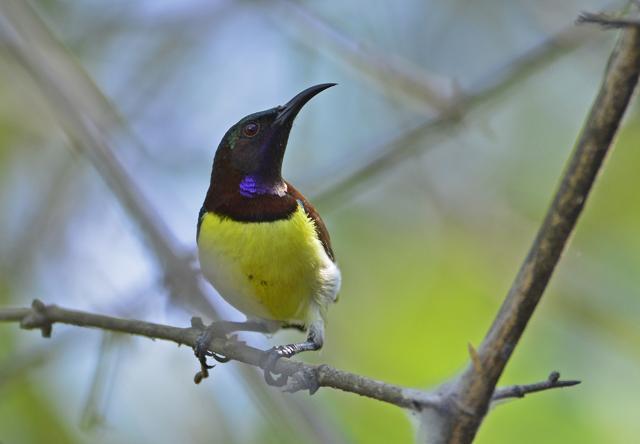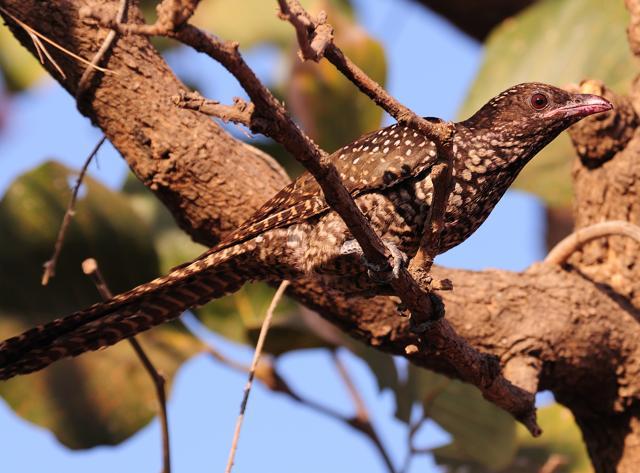Cheep thrills: It’s time for a weekend of birdwatching in Mumbai
The Mumbai Bird Race is on Sunday. The Great Backyard Bird Count needs only a few minutes of your time. Do it for a lark, won’t you?
Notice how it suddenly got warm this week? The birds doubtless felt it too, which makes this weekend more interesting than usual. Two bird-related events are on the calendar: tomorrow’s 13th HSBC Mumbai Bird Race, and India’s third Great Backyard Bird Count, which started yesterday and goes on till Monday.

Humans are understandably ecstatic. It’s when bird-watching enthusiasts meet, spend daylight hours in the city’s greenest areas and try to spot and record as many winged species as they can. It’s more rewarding than you think. The Mumbai region covers a coast, scrublands, a national park, hills, mangroves and mudflats, offering a bird-spotting bonanza like no other Indian city.
The birds, however, care for comfort, not counting. The warm spell may chase away winter visitors, which may affect bird tallies and the data that helps understand our feathered friends.

THE RACE IS ON
For naturalist and author Sunjoy Monga, the skies bring promise. He has been instrumental in setting up and organising the race, which now has 16 editions as far apart as Jodhpur and Coimbatore. “In the initial years, I had to explain that birds don’t race in a bird race, people do,” he recalls. Now the nearly-300 slots fill up weeks in advance, “40% of them with first-timers. For many it’s a stepping stone into the world of wildlife appreciation,” Monga says.
Prachi Galange has fond memories of her first race. A nature enthusiast even as a child, she heard about it as a college student when her friends participated in the first edition in 2005. Next year, she was part of a team of five that drove through Karnala, Sewri, the Sanjay Gandhi National Park and IIT Powai over 12 hours, ticking every bird they saw off a checklist. “We didn’t win, but it was great fun,” she says.
It’s hard to cheat. A species must be spotted or heard by two or more team members and you’ll see the common ones anyway. Spot a rare bird and you may be asked where you saw it and what it looks like. “If you claim you saw a bird outside its usual habitat or missed seeing other common ones, that’s suspicious,” Galange says.
This year’s race will have no ‘winner’ – sightings are rewards in themselves, the organisers have decided. But Ravi Vaidyanathan, a longtime birder, former participant and race organiser for seven years, says it won’t dent excitement. “Mumbai has the most enthusiastic crowds,” he says. “In other cities they see it as a day of fun; the birding is incidental. Here, everyone knows how important the data is for conservation.”

NOT IN MY BACKYARD?
On Valentine’s Day last week, while the rest of us were cringing or celebrating, Kadambari Devarajan was out bird-spotting at the IIT campus.
Devarajan, whose husband is part of IIT’s resident faculty, studied computer science but realised how much she loved ecology while pursuing her PhD in the US. “I volunteered at a lab for mammals and ended up devoting more energy to minding bunnies.”
It explains why the self-described “data-driven geek” has been organising the Great Backyard Bird Count in Mumbai since 2015. It’s the local edition of a 20-year-old global event, the first online citizen-science project to collect data on wild birds and display results in near real-time.
More than 160,000 people across 130 countries participate, some for as little as 15 minutes, tallying the numbers and kinds of birds they’ve spotted in a region. The resulting data create an annual snapshot of the distribution and abundance of our avian companions – last year’s count stood at 5,689 species around the world.
“The biggest misconception is that we have only crows, pigeons, sparrows and mynahs,” Devarajan says. “When first-timers spot 30 species in an hour, they’re amazed. And then birding becomes addictive.”
Read: Did sightings go as planned in north India on Bird Day on Feb 5?
The birding community is diverse. There are photographers, seekers of rare species, counters and those who “just want to tick a type off their list.” Some, like Devarajan, are fascinated by bird behaviour. “You can observe birds by yourself, it’s therapeutic, even meditative,” she says. “And there’s so much drama with birds, you’re never bored.”
SIGHT FOR SOAR EYES

Was that a Red-Wattled Lapwing or a Caspian Tern that perched on your windowsill for two precious seconds yesterday?
Sunjoy Monga’s Birds of the Mumbai Region (400 pp; Yuhina Eco-Media, Rs 495) is a field guide to close to 350 common and rare feathered species spotted in Mumbai, Thane, Gorai, Matheran , Murud and Panvel.
Compact, easy to navigate and full of gorgeous photos of every listed bird, it makes identification easy and also makes for delightful leisurely reading. Did you know, for instance, that the House Crow has outsmarted the larger, blacker Jungle Crow in urban areas?
Monga says the book took 18 months of research and digging into his own extensive records.
The book is designed to help you understand birds may end up helping you understand Mumbai better too. Birder Ravi Vaidyanathan says to know how your city is doing, just scan the sky. “It’s filled with crows and kites that feed on our garbage, without them Mumbai would rot in two days.” Compare this with Mahabaleshwar, where he visited a week ago: “I didn’t see a kite or crow the two days I was there.”
FLIGHT SIMULATOR

“In a forest, you never know where the next sighting will be,” says Prachi Galange, who was a project coordinator with the Bombay Natural History Society before co-founding a nature trails company. Replacing clumsy logbooks is EBird, an app that lets you record the birds you see, manage your own lists, analyse them over time and region and contribute towards data on flight patterns, migration and conservation.
The app is addictive, users say. Kadambari Devarajan, a bird enthusiast, has taken up its Last Birder Standing Challenge – spotting birds and contributing a list for every day of 2017. “It’s fun and gives you something to look forward to,” she says.
Read: Birds can spring surprises. See how their numbers are rising along the Yamuna
Catch your daily dose of Fashion, Health, Festivals, Travel, Relationship, Recipe and all the other Latest Lifestyle News on Hindustan Times Website and APPs.




